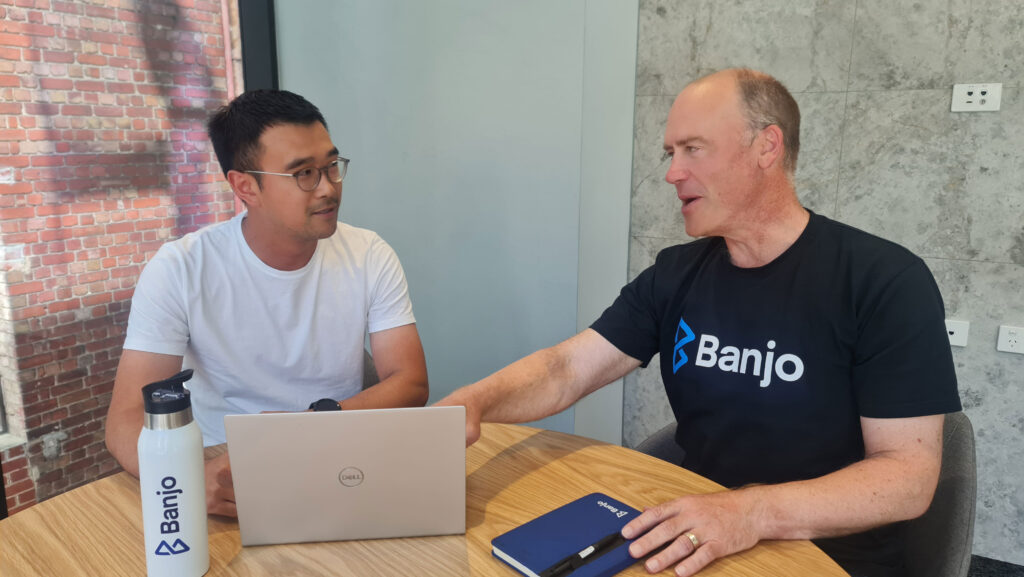Business Wrap - February 2023

As a debt tool for your business, Asset and Equipment finance can be one of the most flexible and cost-effective ways to get the significant asset you need for your business, without tying up your working capital. Banjo’s Head of Asset Finance, Christopher Cam explains how to get the best out of it.
What can I use Asset and Equipment Finance for?
Many of Banjo’s clients use it to replace ageing assets, or acquire new and used equipment that helps them service new or existing work contracts. Others use it to leverage off equipment that’s owned outright, to inject additional working capital into the business. Some specific examples might include:
- Purchasing a new manufacturing machine to increase production capacity
- Buying a fleet of light commercial vehicles to service additional courier opportunities
- Raising capital against an existing tractor to assist with an upcoming harvest season.
How does Asset and Equipment finance help my business’ future?
Investing in new vehicles or plant and equipment can often be very expensive. If they’re purchased outright with general business cash reserves, it can impact your cash flow and ability to meet other competing working capital requirements. Securing Asset and Equipment finance allows your business to preserve working capital and pay for assets over a 12-to-60-month period. During the loan period, your business may experience an increase in business income generated by the asset.
When taking out Asset and Equipment finance, there’s no requirement for other collateral, as the lender will simply take a charge over the funded asset. They’ll also take into account the increase in operational productivity and efficiency, and the potential tax incentives such as the Federal Government’s instant asset write off.
Being able to purchase the latest equipment helps you to keep ‘ahead of the game’ and absorb the efficiency gains. Having new vehicles, plant or equipment helps to maximise productivity, and can reduce downtime and ongoing repair and maintenance costs.
There’s also the potential for an improvement in your credit profile by being able to make payments on time, thus having a positive impact on your credit scores.
What types of business is Asset and Equipment finance right for?
Any business that uses equipment daily to generate business income can benefit from this kind of finance, but broadly speaking, all types of business can use it to get ahead.
Your business’ growth and competitiveness are often fuelled by investment in motor vehicle, plant, equipment, and technology. Having up-to-date, reliable equipment that enables you to respond quickly to market changes, or stay ahead of the competition, will always reap strategic advantage for your business.
Certain businesses in certain industries may be more capital intensive than others. Some examples of this are:
- Agriculture
- Construction
- Woodworking
- Transportation
- Earthmoving
- Healthcare.

Being able to purchase the latest equipment helps you to keep ‘ahead of the game’ and absorb the efficiency gains.
Christopher Cam - Head of Asset Finance -Banjo Loans
When should I be thinking about using Asset and Equipment finance for my business?
As a business owner you have many competing demands in keeping your business afloat, including focusing on customers, marketing, staffing and investments. You need less to worry about, not more.
So, when the time comes that you need funds to expand the business or upgrade its assets, you may be concerned about hurting the business’ working capital. This is where Asset & Equipment Finance is a smart option for acquiring new assets or equipment.
Can you share an example?
Banjo recently facilitated an equipment purchase for a transport and logistics company that was well placed to seize a growth opportunity. The company, which was previously focused on quarry haulage, was seeking to diversify into grain haulage. They had refitted their trucks to be suitable for the new source of income and had developed a good relationship with a reputable grain company. There was clearly further opportunity if the transport company could obtain a truck and trailer combo. Although the business had enough capital to purchase the equipment, Banjo provided an Asset and Equipment finance loan over a 5 year period so the business could avoid putting strain on their existing working capital. Instead, they redirected these funds towards other critical operating expenses such as labour and fuel.
Banjo’s dedicated loan specialists make a point of understanding your business so they can best help you navigate through your next equipment purchase.
Christopher Cam - Head of Asset Finance -Banjo Loans
What are the key things to look for in an Asset and Equipment finance lender?
Businesses need a quick turnaround on finance to help them take advantage of growth opportunities, so it’s important to work with a lender that can provide speedy, flexible, personalised asset finance solutions to suit your business.
Banjo’s dedicated loan specialists make a point of understanding your business so they can best help you navigate through your next equipment purchase.
Are there any common misconceptions about this type of finance?
Most businesses are aware that Asset and Equipment finance can help fund an equipment purchase.
However, some don’t realise that Asset and Equipment finance solutions can help them free up capital by offering equipment that’s owned outright by the business. Compared to an unsecured business loan, this type of finance has many benefits that include longer loan terms to assist with working capital, increased loan size depending on the asset security and competitive pricing options.


